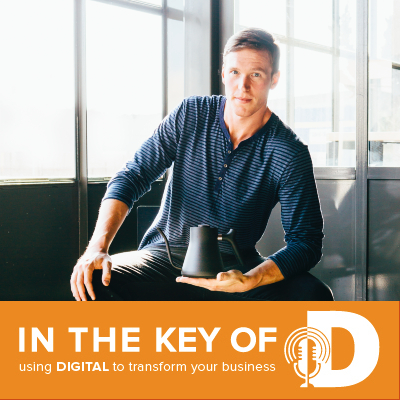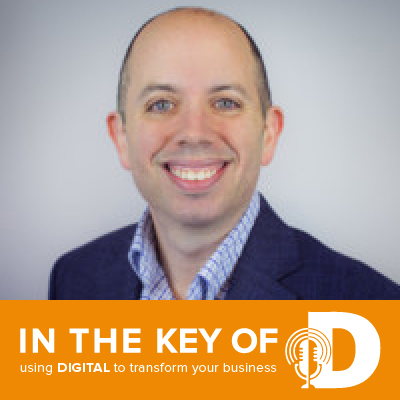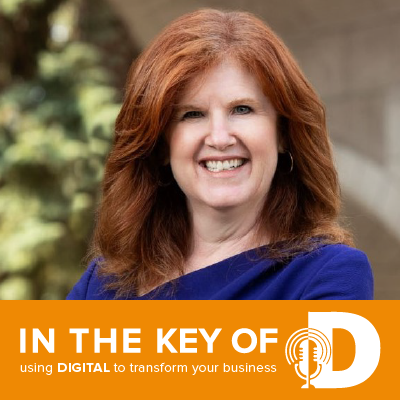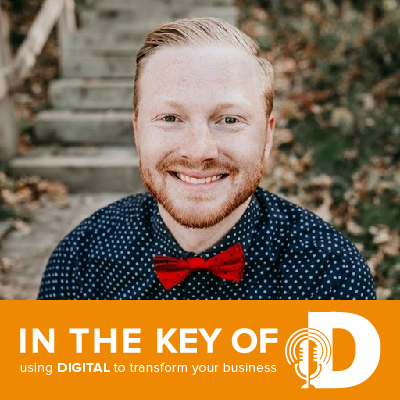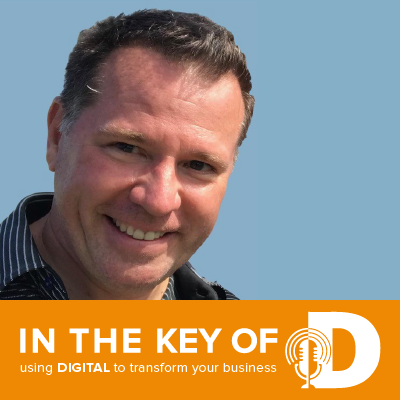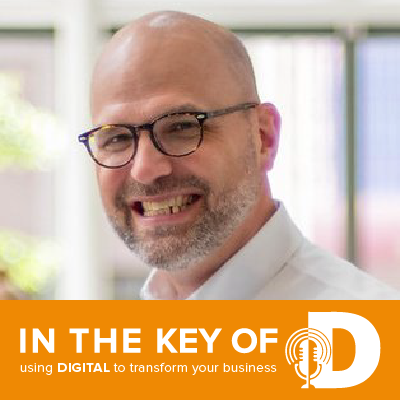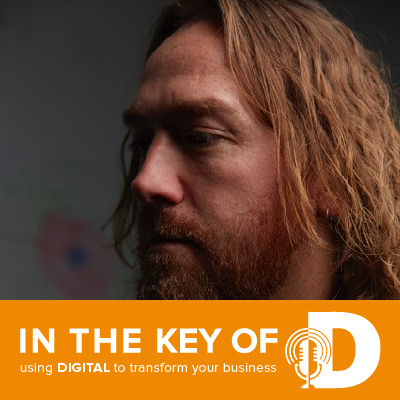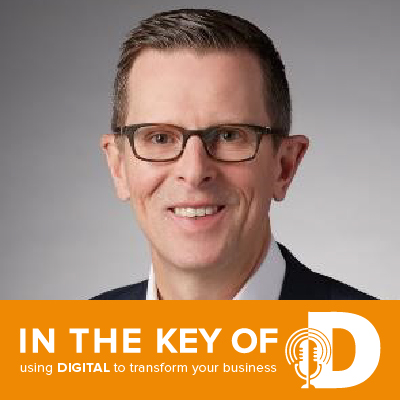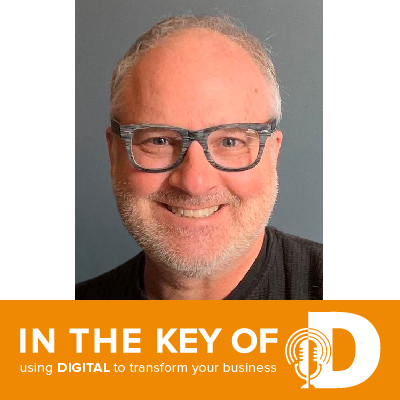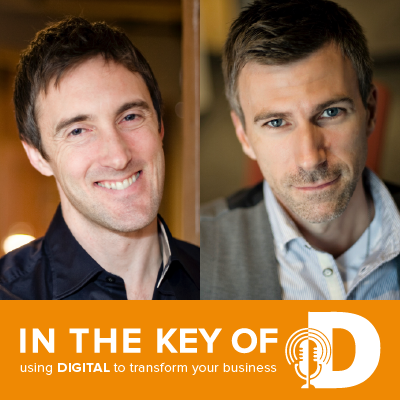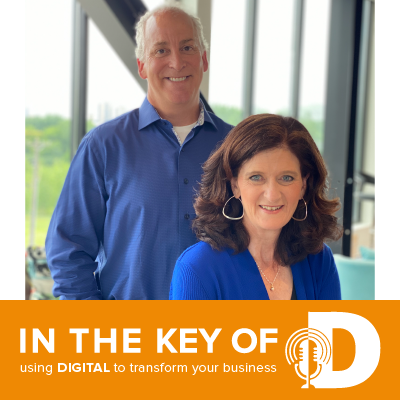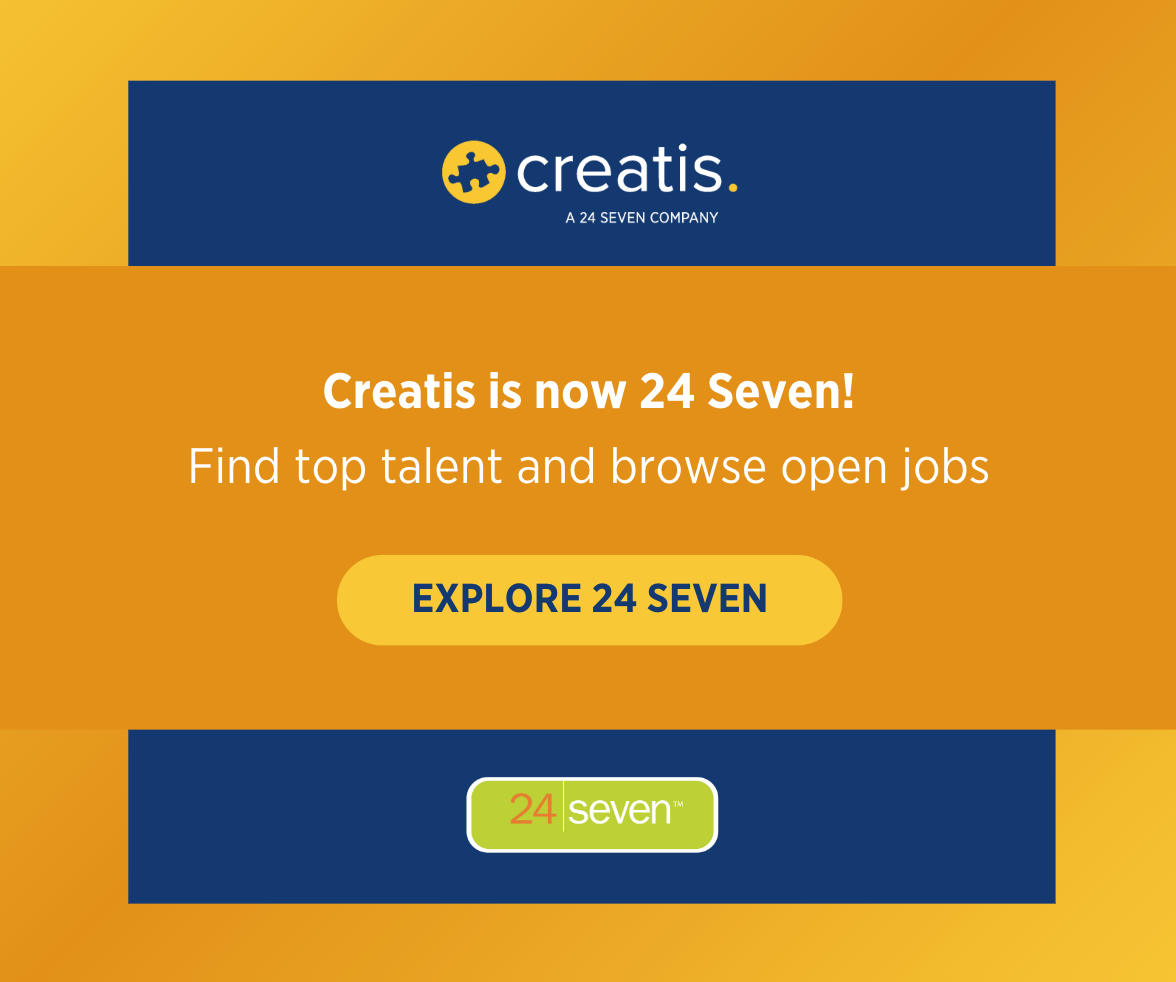
episode 14
How Understanding POEMs Drives Digital Integration with Adam Dince
Can you hear that? It’s your data speaking, and Adam Dince wants you to listen.
From the early days of building websites to leading digital experience teams, Adam’s career spans over 20 years of digital marketing evolution, with a focus on using organic and paid search to reach the right person at the right time with the right content. Adam is a lifelong student of data who wants to know what can be learned about the customer through search behavior and history. Adam joins the podcast to discuss the necessity of an omnichannel digital marketing strategy, best practices for reaching customers online; the evolution of paid, owned and earned media; and his pivotal 80/20 social listening rule to help grow your audience.
Our Guest

Adam Dince
Adam Dince is the Director of Digital Experiences at Collegis Education where he leads the SEO/CRO, User-Experience/Front-End, and Marketing Automation practices.
Prior to Collegis, Adam was the Director of Digital Marketing at Arrowhead Holdings and the Director of Earned Media at Deluxe.
Adam has over 20 years of experience in search marketing, content strategy, and other digital channels. He has worked both agency and client-side including MRM/McCann and iCrossing, and has led strategy for some of the largest brands in the world.
Adam graduated from San Diego State University with his BS in Business Administration and an MBA from St. Catherine University. He is also an adjunct digital marketing instructor in the University of St. Thomas’s MBA program and at the University of Wisconsin, Milwaukee.
Show Notes
In this episode we cover:
- [0:50] Introduction to Adam Dince
- [2:20] How Adam defines DT and how it’s impacted companies he’s worked with
- [3:20] Adam gives us a peek into his own career journey, and how the aspects of digital have evolved along with his various roles.
- [7:15] Adam talks about his current role as Director of Digital Experiences at Collegis, and the functionalities of his team
- [8:01] Adam defines what “owned media” means, and the acronym P.O.E.M (paid, owned and earned media) and how it functions.
- [9:45] Deeper dive on Marketing Channels: How does Adam define the various digital channels?
- [10:50] Which is Adam’s favorite digital channel and why?
- [13:15] Adam gets into omnichannel (also known as integrated) digital marketing, how it works and why it’s so important.
- [15:15] Adam explains the significance of Google’s groundbreaking “Zero Moment of Truth” study on online marketing, centered on the question: How do shoppers make purchase decisions?
- [16:40] Does omnichannel marketing strategy differ between B2B vs. B2C companies? Marketers must seek to understand where “your customers are hanging out online.”
- [20:15] Adam gives best practices for B2C or B2B companies trying to deploy omnichannel marketing strategies. He recommends sketching out your customer’s journey.
- [21:00] Direct-to-consumer companies have a love/hate relationship with Amazon…So what are Adam’s thoughts on using Amazon to promote and sell products?
- [24:35] Deeper dive on data...When we’re doing omnichannel marketing, how do we measure the effectiveness of our data—and credit the RIGHT data—at each customer touchpoint?
- [28:00] What tips does Adam have for business leaders getting started in organic social media? Adam’s 80/20 rule: 80% of your time listening, 20% posting.
- [30:40] Rapid Fire: Quick Questions and Fast Answers with Adam
- [33:45] How does Adam stay current in digital?
- [35:50] “Key” Takeaways with Kathy and Gino
Links & Resources:
- Read Google’s ZMOT (Zero Moment of Truth) Handbook & Study
- Follow Adam's favorite digital marketing experts on Twitter: Danny Sullivan @dannysullivan, Jason Falls @jasonfalls
- Connect with Adam on LinkedIn
- Buy Adam’s Book, "Hopeful to Hired."
"Key" Takeaways
- When getting into digital jump in and trust your gut but expect to learn on the fly. Adam did this in the early days of digital. Understand that you’ll probably make mistakes because digital moves so fast. Don’t get discouraged, keep persevering.
- Kathy & Gino reflect on how much has changed in the past 20 years of digital evolution: Websites used to be more like online business cards, now they are one-stop ecommerce stores where you can search, compare, and buy products. The customer’s sales journey has completely changed, and our strategies must change along with them.
- Adam’s favorite digital channel is Search. In most digital channels you’re trying to be as relevant as possible but making sure that you’re not getting in the way of the customer, including paid and targeted advertising. Search is really the only channel where we can get your message in front of customers at the moment they’ve asked for it. Building strong SEO presence can help marketers and businesses reach and understand their customers better. The importance of studying search data almost like an anthropologist is a best practice for Adam.
- Your content must be timely, relevant, and meaningful. Right message, right time for the right person. The right time is when a customer is asking for a message. Ads can get really targeted with today’s digital technology, and that’s a good way to have a better chance of reaching audience—but search is like a sledgehammer hitting right on that target.
- Adam’s P.O.E.M. acronym stands for “paid, owned and earned media.” Paid media is the paid online advertising, owned media is any digital property or channel a company owns/runs, and earned media used to be on PR side (printed newspaper), but social has turned this on its head.
- We must have an appreciation for the entire customer funnel, far before it turns into a sale or conversion. Each touchpoint is important and can contribute to the end goal. “Assisted Conversion” is the idea that your digital “foot traffic” came from another source or an accumulation of sources – which all relates back to having a unified omnichannel marketing strategy. The last click that led to a sale shouldn’t always get all of the attention!
- The 80/20 Rule: Spend 80% of your time listening and 20% posting. You have to know where your customers hang out, how they behave and what they care about before you can craft effective content that reaches them. Adam believes listening to and studying Search data—using free tools like Google Analytics—is the biggest catalyst for conversion growth.







